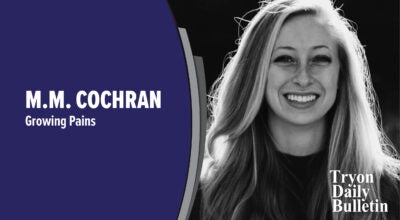Stranger than fiction
Published 4:28 pm Tuesday, March 14, 2017
I am a lover of fiction. Suspenseful psychological thrillers, intense young adult dystopian novels, intriguing “chick lit.” But sometimes I enjoy a well-crafted memoir or other work of nonfiction. Here are a few of my favorite true stories that are stranger than fiction.
“Escape” is the dramatic account of a woman trapped in a fundamentalist Mormon marriage. Carolyn Jessop was born into the religious sect and forced to wed someone 32 years older than her when she was just a teenager. Her memoir explores the unusual family dynamics of the Fundamentalist Church of Jesus Christ of Latter-Day Saints, which arranges plural marriages, and her determination to escape and find a better life for herself and her eight children.
Malala Yousafzai’s best-selling memoir “I am Malala” is a story of bravery and resilience. Malala was shot by a member of the Taliban when she was only 15 for committing the crime of being a female and attending school. Miraculously, she survived and became an advocate for women’s rights in Pakistan and the youngest-ever Nobel Peace Prize laureate.
“Troublemaker: Surviving Hollywood and Scientology” is written by Leah Remini, an actress who is most well known for her role on the television series “King of Queens.” Leah was introduced to the Church of Scientology as a teenager and remained a member for over 30 years. She left in 2013 after learning of rampant corruption and abuse. The book offers an insider’s view of the mysterious religious movement.
Not all nonfiction I read has to do with extremist religions! One of my favorites is “Into Thin Air” by Jon Krakauer. The author was present during the 1996 Mount Everest disaster, when eight climbers were killed in a single day by a storm on the planet’s tallest mountain. While this subject wouldn’t typically interest me, Krakauer’s writing is so captivating that I was completely engrossed in the story.
“Night” is Holocaust survivor Elie Wiesel’s autobiography, which focuses on his teenage years as a Jewish prisoner in Nazi death camps. It’s a difficult read, but well worth it. Another fascinating look at World War II is Maus by Art Spiegelman. Spiegelman tells his father’s story of surviving the Holocaust in graphic novel form, drawing the Nazis as cats and the Jews as mice.
I heard Josh Hanagarne, author of “The World’s Strongest Librarian,” speak at a library conference and immediately felt compelled to read his memoir about life with Tourette Syndrome. Diagnosed as a teenager, he tried everything he could to make his tics more manageable. He ironically decided to apply to work at a library – a place of peace and quiet for someone who could never control the noise he made. It was an interesting read that taught me a lot I didn’t know about Tourette’s.
I realize that most of these works of nonfiction are quite serious and some are utterly depressing (although most have hopeful endings and peaceful resolutions). I’ll have to balance that out by giving you some humorous reading recommendations next month!
Jen Pace Dickenson is the Youth Services Librarian at Polk County Public Library. For information about the library’s resources, programs, and other services, visit www.polklibrary.org or call 828-894-8721.





